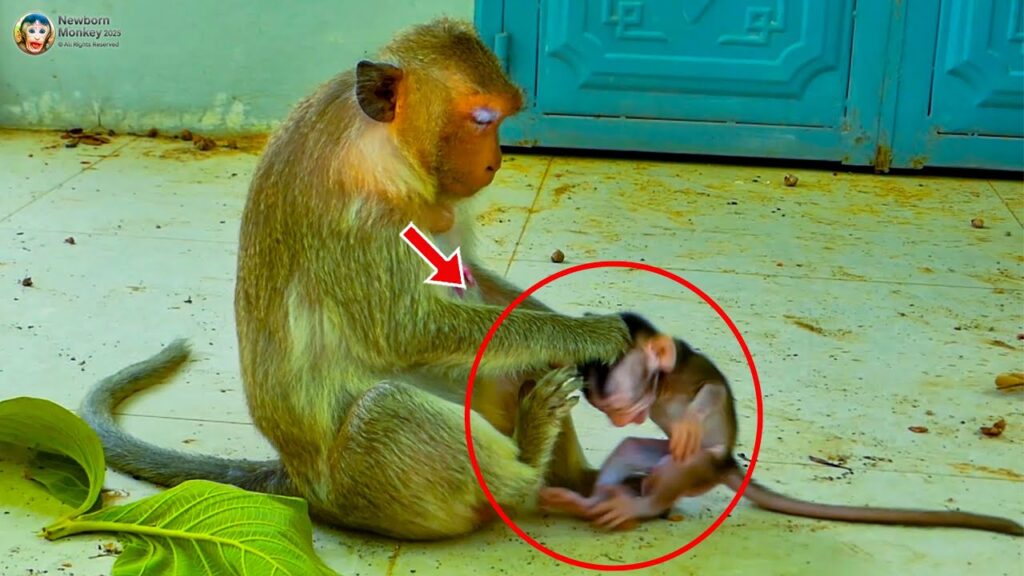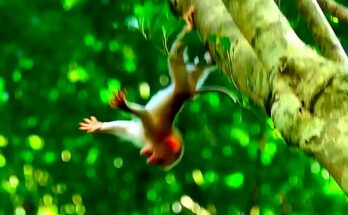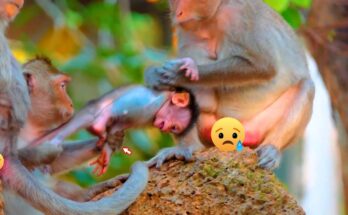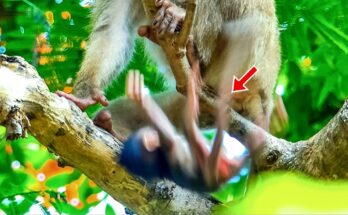
In the quiet forest, a tender yet emotional scene unfolds between a mother monkey and her little newborn. The baby, still fragile and learning about the world, clings tightly to its mother’s belly, searching desperately for comfort and nourishment. Its tiny cries echo softly, a natural signal of hunger and need. With innocent eyes, the baby presses close, trying to find the warmth of milk that would ease its tiny body’s struggle.
Yet, the mother does not immediately respond. She shifts her position, gently but firmly moving the infant aside. To the onlooker, it feels heartbreaking—watching the baby’s tiny hands reach out again and again, only to be delayed from what it craves most. The mother sits calmly, sometimes grooming herself, sometimes gazing into the distance, while her baby squirms with need.
This moment, though difficult to watch, is part of the natural rhythm of survival. Mother monkeys often delay feeding, not out of cruelty, but to teach patience, independence, and resilience. By holding back, she encourages her little one to endure and grow stronger, preparing it for the challenges of life in the wild. Still, the baby’s soft whimpers pull at the heart, reminding us of the delicate bond between dependence and guidance.
Finally, after what feels like an eternity, the mother allows the baby close again. With relief, the infant latches onto her, drinking eagerly as its cries fade into quiet contentment. The lesson is tough, but the love is present in every gesture.
This tender struggle shows the beauty and pain of motherhood in the animal world. Even when the path seems harsh, it is guided by deep instinct and the promise of nurturing life toward strength and survival.


